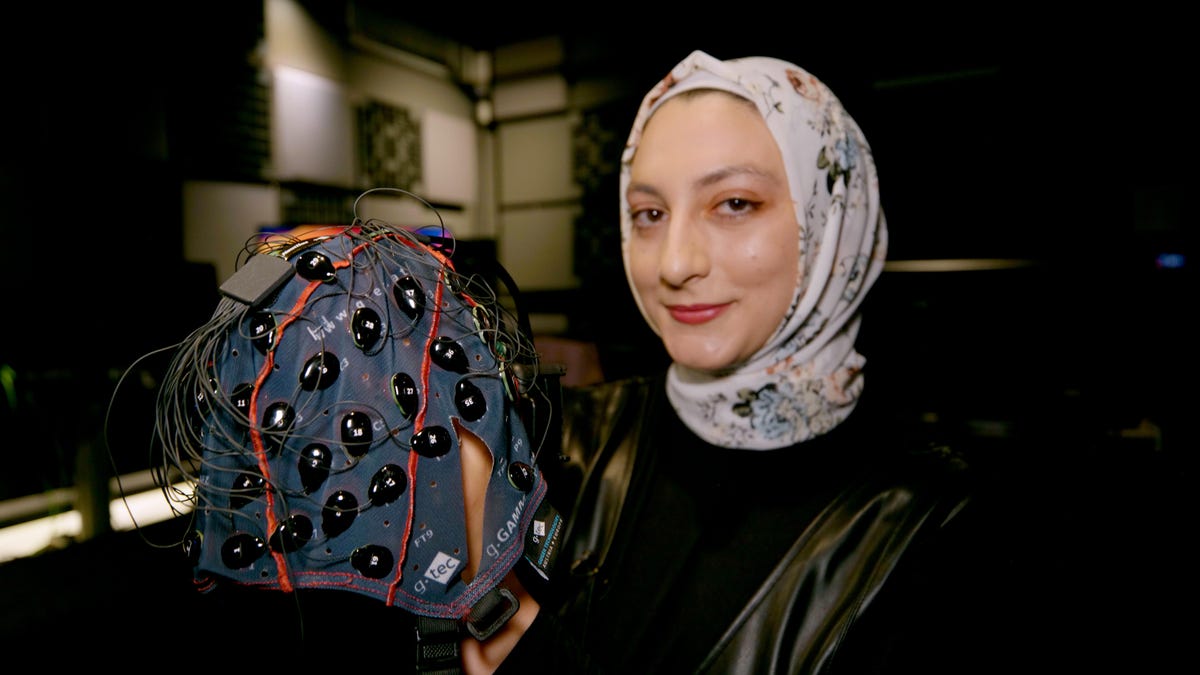I’ve watched the movie It several times. But I’d never seen it while having dozens of sensors attached to my head and fingers, measuring my brain activity and skin conductance as Pennywise’s sharp, pointed teeth snapped at me from the screen — until now.
I stopped by Dolby’s San Francisco office to learn more about how image and sound work together to make you feel emotions like fear, joy and sadness. My visit started with watching clips from films like Dune and A Quiet Place in Dolby’s cinema (in which I felt incredibly immersed), before migrating to the company’s biophysical lab, where I was strapped to all manner of sensors, from an EEG monitor to measure neural activity, to an eye tracker and pupilometer, which measures gaze and changes in pupil dilation, while watching scenes from It. Giant screens around the room showed my body reacting to each jump scare and suspenseful moment with a series of spikes.
Movies like these are made to be more immersive thanks to tech like Dolby Vision and Atmos. Dolby Vision makes images on your screen look more realistic by increasing brightness, amplifying colors and depicting deep, dark levels of black. Dolby Atmos makes it seem like sounds are all around you, instead of just coming from the left or right. So you can actually hear people and objects move closer or further away, making it feel like you’re actually in the scene you’re watching. Sounds can be placed in specific areas, so you can hear a spaceship fly above you, or a car drive past you. It’s designed to mimic how you’d hear in the real world.
When watching a clip from The Last of Us, as people fired guns in the background, it sounded like they were behind me. But when a character who was front and center was shooting, that’s also where the sound seemed to come from.
Getting to experience those immersive sounds and visuals at Dolby was an entrancing (and sometimes terrifying) experience, but you can re-create the experience at home. Dolby Vision and Atmos are in everything from the latest iPhones and Samsung phones to TVs and soundbars from companies like LG, Sony and TCL. Streaming services like Netflix, Disney Plus and Apple TV Plus support Dolby Vision and Atmos, so you can also watch immersive content right from your couch. AirPods can play Dolby Atmos through Apple Music, and you’ll find the tech in game consoles like the PlayStation 5 and Xbox Series X or S.
So, as cool as Dolby’s biophysical lab is, you won’t need one to know that a creepy clown depicted in Dolby Vision and Atmos can make your skin crawl.
Check out the video above to learn more about how Dolby Vision and Atmos work to amplify certain emotions, how to re-create the experience in your living room, and, of course, to see me react to scary onscreen content.

